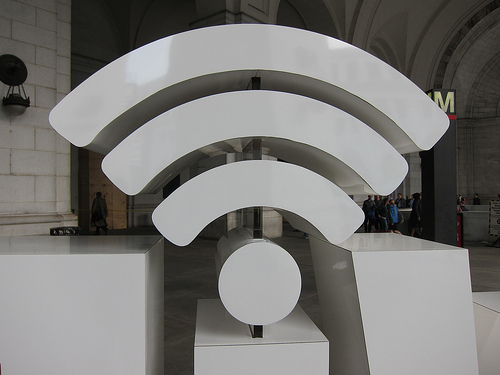How To Boost Your WiFi Signal

These days, many people own devices that have built-in wireless connectivity capabilities. This is especially true when it comes to today’s most popular mobile gadgets, such as smartphones, tablets, and laptops. Even some digital cameras and portable gaming systems these days come with built in wireless cards.
Having this capability makes it easier for us to connect while on the go, and many people these days have not just a traditional modem-wired Internet connection at their homes or places of business, but a wireless connection through a router as well.

Still, wireless technology is still being developed and improved, so connectivity issues are not uncommon. Many people experience difficulties when connecting to a wireless network, such as being stuck with a “limited” connection, failing to get an adequate signal on their devices, and even complete failure for the device to recognize the wireless signal. Fortunately, there are some simple steps that you can take to improve the strength and speed of your home or business wireless signal.
For starters, you will need to make sure that you have access to both your Internet modem and the wireless router that is likely connected to it. Depending on your Internet service provider, the modem and the router may be one in the same. You may also need a hard-wired Internet connection, such as one connected from the modem to your computer via Ethernet cord, in case you need to use the Web to perform any of the following tasks.
One of the biggest contributors to a poor wireless signal is the actual placement of the router itself. This is often a problem in larger homes where the signal does not reach through the entire property. A lot of times, moving the router to a central location is a great way to improve its range, rather than having the router located somewhere on the far front or back end of the home.
Furthermore, many routers these days have a small antenna attached to the top. Most people do not realize what a difference the direction the antenna faces can make; take a moment to move the antenna around in different directions to see which position gives leads to the strongest wireless signal.
Finally, if none of these options work, check the owner’s manual that came with the router to see how far of a range it has. If the range is smaller than the overall range of your home, then this could be the cause of your problem. You will need to purchase a router with a wider range in order to fix the problem.
Over time, updates to the software that runs your wireless router may become available from the manufacturer. If you fail to install these in a timely manner, your router may not function properly, which could lead to poor signal strength. Therefore, if none of the above tips work, consider going online and doing a search for driver and software updates for your particular make and model of router.
A lot of times, these take just a few minutes to download and install, but can make all the difference when it comes to your overall signal strength and connection quality.
License: Creative Commons
image source
Peter Wendt is a writer from Texas. He loves researching technology, and constantly relies on wireless hotspot services in order to complete his work.
